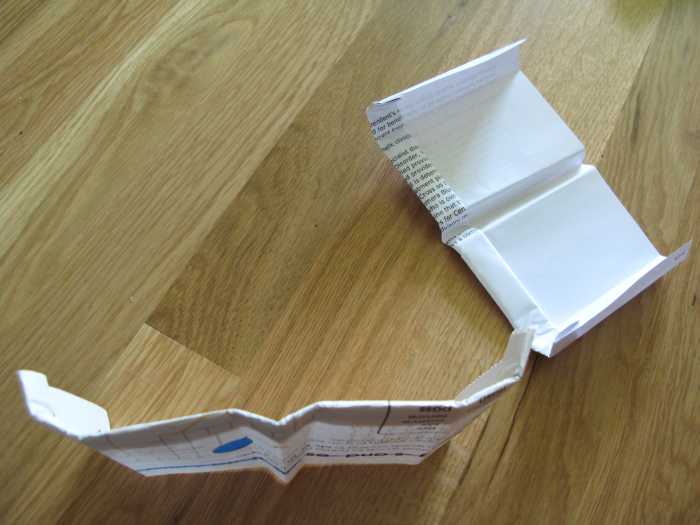
My favorite paper airplane. Excellent indoor plane, adequate outdoors too. Medium toss. Very robust, wobbles, does long swoops, tends to drift to one side or the other. Hard tosses cause unpredictable acrobatics before it settles into swooping or gliding. The design originally came from a book I had as a kid, but my brother Tom added the grip in the center. The inside wingtip crease might be my addition.

Use an 8.5" x 11" piece of paper. All folds are parallel to one of the sides. First you roll up the one of the 8.5" edges, then you add a bunch of folds parallel to the 11" edge. In detail:
Fold the 8.5" edge over in a 1/2" strip. Repeat about 9 times until there the paper is about 8.5" x 4" (including a rolled-up leading edge). The rest of the folds will be parallel to the 11" edge. Keeping the rolled-up edge on the inside, fold it in half, and thoroughly crease the center line. Now for a grip: on either side of the center line, fold it back (rolled-up edge on outside of fold) about 1/2" from the center line, parallel to the center line. Curl up the edges: place a fold with the rolled-up edge on the inside 3/4", and another 3/4" in from that. Done.
You can adjust how it flies by how thoroughly various folds are
creased. It also seems to matter whether the wingfaces bend into a U
or and upside-down-U; a U usually works better.
The M-wing
Slow toss. Tempermental. A glider. 5-second flights.
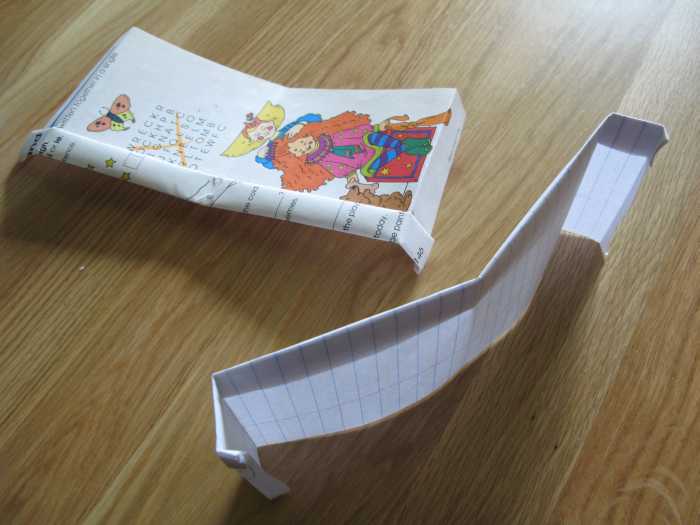
Use an 8.5" by 11" piece of paper. Doesn't matter if one 11" edge has holes or rips or frays. All folds are parallel to an edge. Roll up the 11" edge, then put symmetric folds parallel to the 8.5" edge. In detail:
Find your worst 11" edge, and fold it over in a 1/2" strip, fold again, repeat about 6 times until the paper is 11" x 4", including the rolled-up leading edge. The rest of the folds will be parallel to the 8.5" edges. Fold the rolled-up edge in half, keeping it inside, but do not crease the unfolded wing. Adjust it so the leading edge forms a shallow V and the wing forms a shallow U. Now, at each wingtip, keeping the rolled-up edge on the outside, fold the rolled-up edge and wing 1/4" from the edge, and 1" in from that. Crease those well, both forming 90-degree angles.
The curled-under wingtips serve as stabilization. If you want it
to go more to the right, either uncurl the left edge some or curl the
right edge more. This is an odd looking plane, especially if you've
got the right edge tightly curled and the left hardly curled at all.
Completing the center fold helps a lot for outside flights.
The gull
A decent glider. Odd-looking bird.
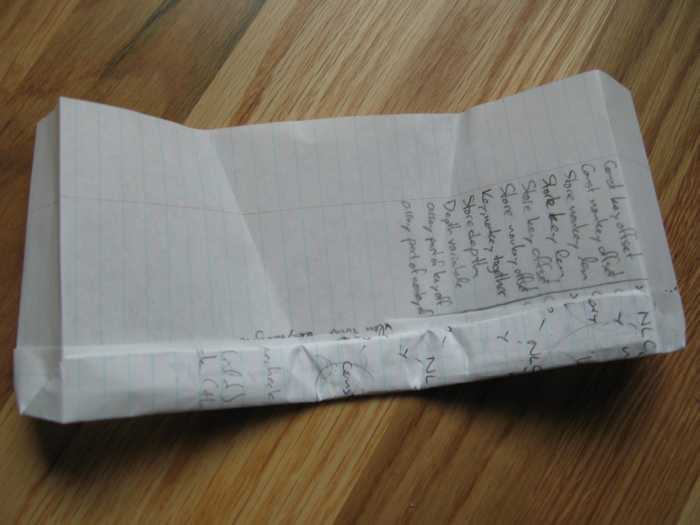
Use an 8.5" by 11" piece of paper. Doesn't matter if one 11" edge has holes or rips or frays.
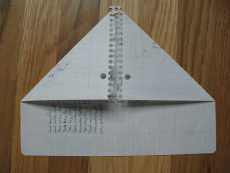
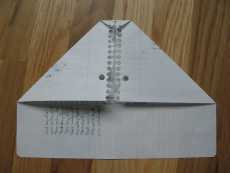
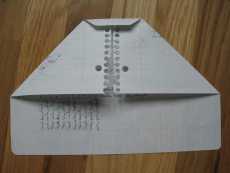
Turn the 11" edge towards you. Don't fold it in half, but fold both top corners to the center so their edges touch. Repeatedly fold the tip over in 1/2" bars.
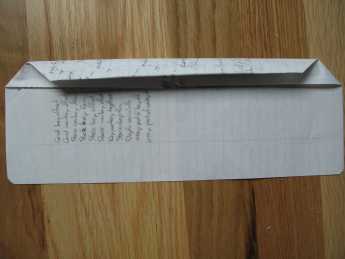
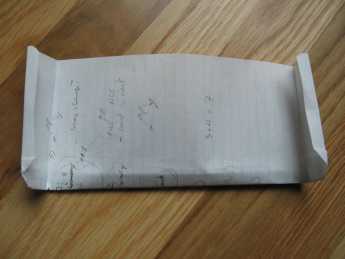
Once you've rolled up the leading edge until it about reaches the bottom of the folded-in corners, flip it upside-down so the rolled-up edge is down. Do two folds at each wingtip, one about 1/4" in, another about 3/4" in from that. Then flip rightside up again, and do two shallow folds at an angle on either side of the centerline.

The wingtips curl down instead of up. It's a glider, I get about 5 second flights. When both are properly trimmed, the m-wing and the gull act nearly identical. The gull seems easier to get right, though.